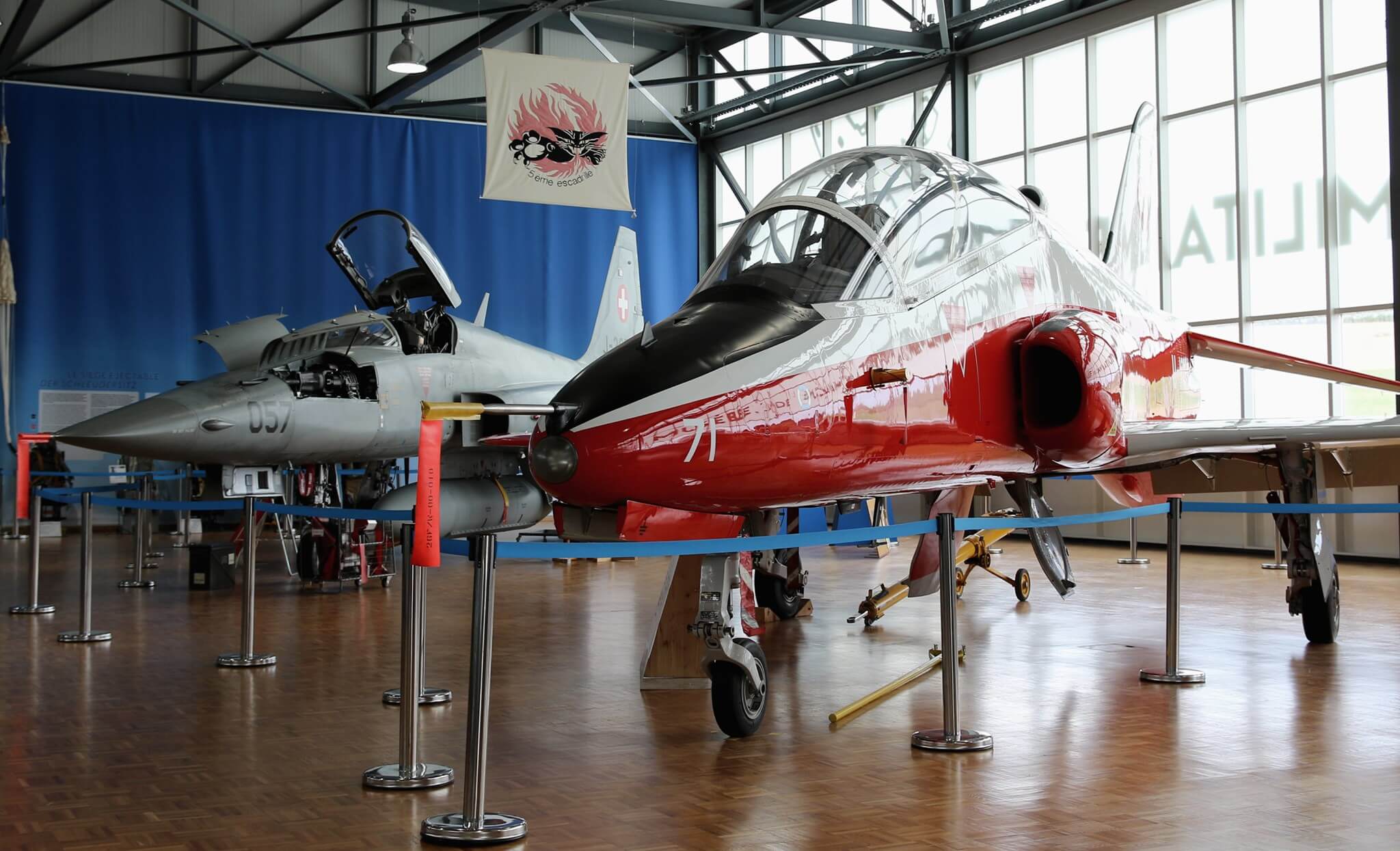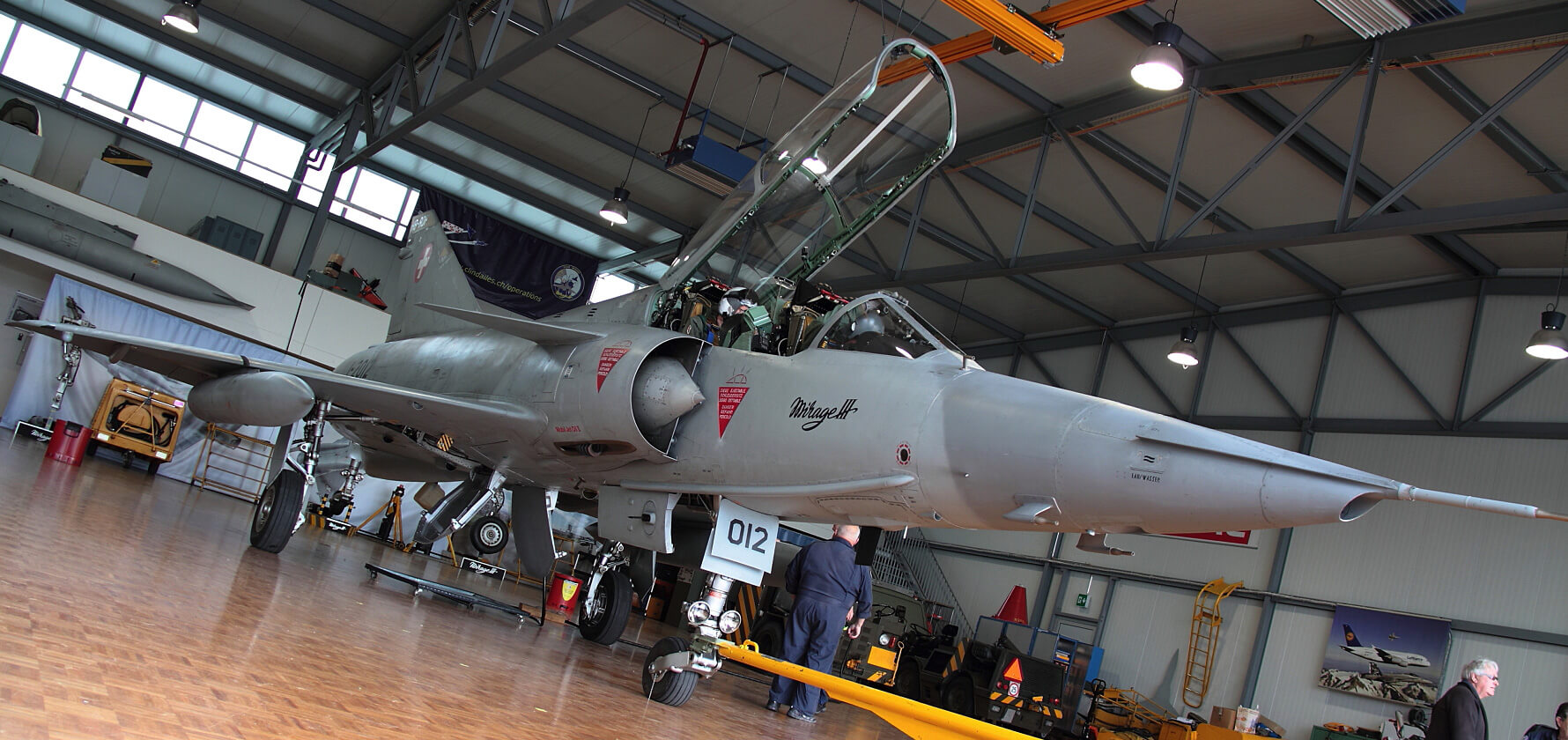This Mirage III DS had flown under the roundels of the Swiss Air Force before returning to the skies thanks to the Espace Passion association. However, parts that had become too old forced the association to put the aircraft in the hangar for good... but not before one last tour over the Swiss air bases! A look back at the history of the Mirage III in Switzerland and the Espace Passion association.
The last European Mirage III
On May 25, many people gathered at Payerne air base (canton of Vaud, Switzerland) for the last two flights of the Espace Passion association's Mirage III. This Mirage III DS (the Swiss two-seater version of the Mirage III E) flew with the Swiss Air Force during the second half of the Cold War, until 2003. It was then restored by the association's volunteers to fly again, a few years later, with some very lucky passengers.
For these last flights, the aircraft was piloted by retired Colonel Thierry Goetschmann, former commander of the Swiss Air Force pilot schools. Peter Egger, president of the Espace Passion association, was also on board as a passenger for the penultimate flight, the last flight being flown solo. The first flight took in airbases in the southern part of Switzerland, followed by a second ad final flight to airbases in eastern Switzerland.
The Mirage III was an emblematic aircraft of the Swiss Air Force. So, to mark this final flight, four Swiss F/A-18 Hornet fighters and a French Mirage 2000 had taken off and joined the Mirage, to the delight of spectators and spotters alike (images and videos in the tweets below).
The Mirage III in Switzerland
In 1961, Switzerland ordered an initial batch of 56 Mirage IIIs from Dassault, 51 of which would be produced in Switzerland. This contract was followed by smaller purchases, with 1 Mirage III in 1965, 1 Mirage III in 1972 and two Mirage IIIs in 1980. In all, three versions were delivered or produced in Switzerland:
- 36 Mirage III S: These were used to intercept and protect Swiss skies. It was not uncommon to see these aircraft take off in a hurry using JATO rockets, enabling them to take off in less than 400 meters. They could also carry smooth bombs for air-to-ground strikes.
- 18 Mirage RS: this is a Mirage III R, specialized in reconnaissance and to Swiss standards. For this purpose, the aircraft loses its nose radar in favor of an OMERA photographic system, and gains the option of carrying a central reconnaissance pod. This version still retains the two 30 mm DEFA cannons and the carriage of two AIM-9 Sidewinder short-range air-to-air missiles.
- 4 Mirage III BS: two-seat version of the Mirage III A, used for training.
- 2 Mirage DS: two-seat version of the Mirage III E, used for training.
The Mirage III S differs from the French Mirage III by integrating the American Hugues TARAN-18 radar tandem with the AIM-4 Falcon and AIM-9 Sidewinder missiles instead of the Cyrano Ilbis radar with the Matra R.530 missile.The disadvantage of this choice was that a longer version of the Mirage III C, originally planned, had to be found, so the Mirage III E, 30 centimetres longer than the III C, was ordered.
Another major problem was also added to the Swiss order: the height of the vertical stabilizer. Switzerland is known for having many air bases with caverns to shelter its fighter planes. However, some entrances are too low for Swiss Mirage IIIs. The front landing gear was modified with a pneumatic system to raise the nose and thus lower the vertical stabilizer sufficiently. The landing gear was also reinforced, and hooking points were installed to enable aircraft to be suspended in caves.
The fleet will be upgraded between 1985 and 1988 with :
- a new radar (for radar-equipped aircraft)
- a new decoy launcher system (AN/ALE-40)
- the addition of canard planes (70% wing) located between the nozzle inlet and the beginning of the delta wing
These upgraded Swiss Mirage IIIs are easily recognizable because, in addition to the canard planes, the aircraft are repainted in a double shade of gray or, in the case of the Mirage III RS, in gray and green. This camouflage difference can be seen in the Facebook post below.
After more than 40 years of service, the Mirage IIIs are giving way to the F/A-18C Hornets in two stages, with the last Mirage III S flight in 1999 and 2003 for the Mirage III RS/BS/DS. The retirement in 2005 of the last Mirage III (in its E version) from the Centre d'Essais en Vol meant the end of the Mirage III in Europe... until the association Espace Passion acquired this Mirage III DS and flew it between 2008 and 2023. Since the evening of May 25, it has no longer been possible to see a Mirage III flying in Europe.
An association and a museum
In 1994, former members of Escadrille d'aviation 5 wanted to preserve the squadron's military past after the unit was disbanded. They set up the association "La Cinquième Escadrille". Thanks to contacts within the Swiss Air Force, a Hunter (J-4078) was received as early as 1995, when the Swiss Air Force discontinued this type of aircraft. It was then put on display in a former sawmill in the village of Arnex-sur-Orbe (canton of Vaud, Switzerland), along with numerous parts and equipment. In 1998, the pilots of Escadrille 5 decided to open up to all military aviation enthusiasts, creating the Espace Passion association. Their efforts culminated in the opening of the Musée Clin d'Ailes on April 26, 2003. Today, the museum exhibits almost all the modern combat aircraft of the Swiss Air Force:
- DH-100 Vampire (J-1157), fighter and ground attack, later used for training.
- DH-112 Venom (J-1584) hunting, ground attack and reconnaissance.
- DH-115 Vampire-Trainer (U-1211), training and then modified for film shooting.
- PC-7 (A-908), training and aerobatics. It is one of 12 Swiss PC-7s not upgraded to NCPC-7.
- BAe Hawk. 20 of these aircraft flew in Switzerland and 18 were sold in Finland. This aircraft is actually Finnish (HW-310) but repainted in Swiss colors, with the fictitious number U-1271 (the 20 Swiss Hawks were numbered from 51 to 70).


- F-5 Tiger II (J-3057), training and air cover.
- Mk.58 Hunter (J-4078), hunting and ground attack.
- TMk.68 Hunter-Trainer (J-4203), training and electronic warfare. Used for flights by the association Espace Passion (1 passenger).
- Mirage III S (J-2301), one of two Mirage III S built in France by Dassault. Used for all-weather low-altitude interception or penetration.
- Mirage III RS (R-2117), tactical reconnaissance.
- And of course, the Mirage III DS (J-2012), used by the Swiss Air Force for training and then by the Espace Passion association for flights (1 passenger).
An Alouette 2 and an Alouette 3 can also be seen.
Flights with one passenger
Hunter-Trainer
In 2002, the association set about renovating a Hunter-Trainer aircraft (J-4203). Two years later (and over 2,600 hours of work), the aircraft was able to return to "service" under civil registration HB-RVW. On October 3, 2014, the aircraft made its final flight after carrying over 400 passengers. It can still be seen today in the Clin d'Ailes museum.
Mirage III DS
The project to see a two-seater Mirage III within the association began first and foremost with its renovation, launched in 2005. The goal was achieved in 2009, when it received its civil registration HB-RDF. Espace Passion then became the only association in the world able to offer Mirage III tours.
However, the adventure came to an abrupt halt on October 10, 2022, when the Swiss Federal Office of Aviation (FOCA) notified the association that the Mirage III would not see its annual flight authorization renewed. The FOCA blamed some thirty parts in the engine for having become too old. The association had attempted an appeal, insisting that these parts were far from having reached their quota of flight hours. However, the decision has been upheld, with an exception for May 25 to carry out two farewell flights.
"Once a Mirage, always a Mirage!" Col. (ret.) T. Goetschmann, May 25th 2023.
Découvrez cet article sur Air&Cosmos

